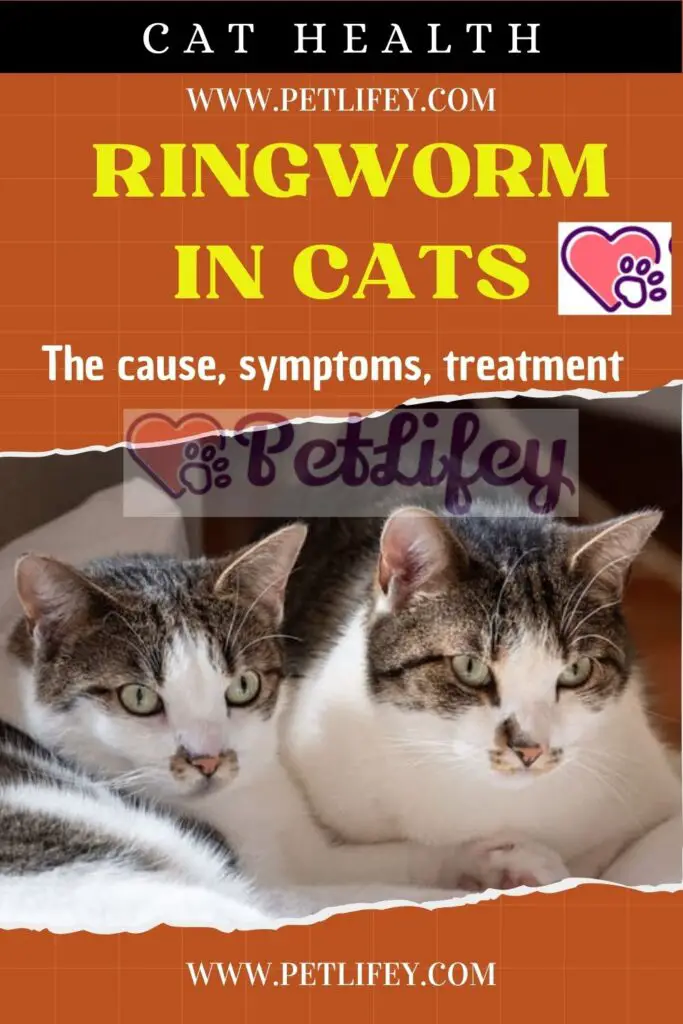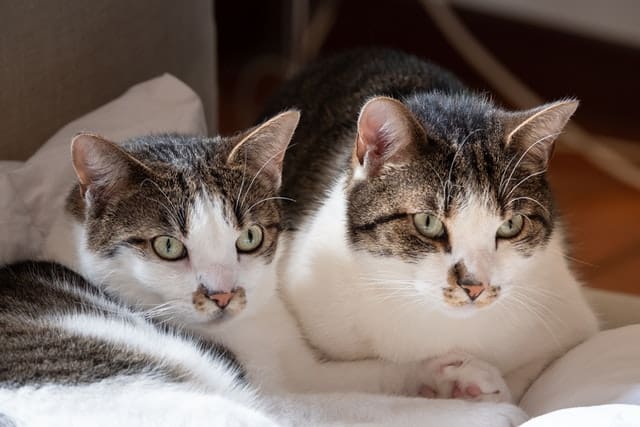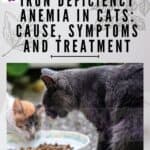
In this article, we will cover cat ringworm. Let’s see the cause, symptoms, treatment and contagion of this disease.
Adopting a pet at home regardless of whether it is a cat, dog, hamster or other, know that you must be aware that they will require a lot of love and care for their health. In the case of cats, for example, one of the most common skin diseases is feline ringworm.
The disease spreads rapidly, but progresses to increasingly visible stages in the vast majority of cases. Unlike other zoonoses, such as flea, tick or other common infections, it cannot be prevented with vaccines, the application of repellants or anti-parasite drugs. However, it is a treatable disease and does not endanger the cat’s life.
Cause and contagion of ringworm in cats
Ringworm is very contagious and also has a very high infectious capacity. Ringworm is a dermatological disease caused by microscopic fungi that spread in the hair and on the skin of the cat. These fungi are dermatophytes and therefore cause a deeply contagious yeast infection.
Ringworm can be infected by different types of fungi, which requires specific treatment for concrete effectiveness. However, the most common is Microsporum canis, which also affects dogs, but also humans. It is imperative to disinfect any item in contact with a contaminated animal, as the fungus can survive for up to a year on other objects or animals and thus be transmitted endlessly.
Symptoms of ringworm in cats
Identifying the pathology in the cat is not exactly simple, without a very regular check of the cat’s coat, it will take into account the age of our cat, other possible diseases and parasites, However, if there are some of the signs, it can be said that the following symptoms are the most common:
- A round hairless area with a diameter of 1 to 8 cm appears mainly in the head and back.
- This area is covered with scaly and / or red and irritated skin.
- Crusting on the surface of the skin is common.
- Sometimes you see widespread cat hair loss.
It seems that animals suffering from food shortages, stress and digestive disorders are more prone to the disease because their immune defenses are weakened.
Diagnosis and treatment of ringworm in cats
Once the lesions appear, the vet can diagnose ringworm with a direct examination of the fur, but sometimes a sample and culture must be taken to ensure the presence of dermatophytes. The examination of lesions with the UV lamp allows in some cases to detect them.
Diagnosis is essential before starting treatment for feline ringworm. If in doubt, consult your veterinarian for a dermatological exam because only he can confirm with certainty the presence of the fungi. Ringworm does not really have to be overlooked due to the risk of transmission to humans.
When the vet decides which treatment is most suitable, he will take into account the age of our cat, other possible diseases and parasites of the cat, the state of his immune system and the risk of contagion to other animals, from there he will hypothesize the most appropriate treatment. There are oral treatments but they are much more aggressive and toxic for our cat’s body, which is why topical treatments are preferable.
However, if the disease persists, it will be necessary to opt for systemic treatment to eliminate the disease altogether. The treatment will be long and it will be necessary to be very persistent, have a lot of patience, but gradually we will see the physical recovery of our friend, but we will have to proceed and not stop the treatment until he is completely healed.
Normally treatments should last for 1 to 3 months, but any ringworm treatment should be done for another 2 to 4 weeks, after the affected cat appears to have recovered. At the end of the planned treatment, the tests will have to be repeated to be completely sure that the disease has passed.
Prevention

It is also important to regularly examine your pet’s coat to make sure it has no possible injuries and to take care to keep your cat healthy with proper care and a balanced diet. Don’t let her immune system weaken.
Advice
- Clean the house: disinfecting and thoroughly cleaning the house is very important, because if we do not eliminate fungi from the environment, no matter how easily our pet manages to cure dermatophytes, they will act again.
- Vinegar with salt: Mix the iodized salt with vinegar until it becomes a kind of paste. Apply this paste to the areas with ringworm. Leave for about 5 minutes, remove and wash the area well. Repeat this process for at least a week.
- Garlic: a powerful disinfectant and an excellent antifungal. Chop and mix with neutral petroleum jelly and then spread it on the ringworm areas. repeat this home remedy for at least 3 days.
- Trim the hair: To prevent the Microsporum Canis fungus from spreading quickly through our cat’s body, we can trim the hair around lesions
- Brush: Brushing our cat to help eliminate fungal spores, but above all it is a good method to spread the powders or other antifungal products prescribed by our vet throughout the body.
- Neem oil along with aloe: this oil has strong antifungal properties. We can find it in pharmacies and herbalists.
- Grapefruit Seed Oil: This other oil has very powerful antibacterial and antifungal properties. Mix grapefruit seed oil with a little warm water to apply twice a day.
- Tea tree oil: this essential oil has very powerful antiseptic properties, we also find it in pharmacies and herbalists.
Logically all this must be anticipated by the cleaning and disinfestation of the whole house and in particular the areas where our friend spends the most time, we must use disposable latex gloves to touch and treat the feline.






